
Aging is a natural and beautiful part of life, but with it comes challenges that can affect our strength and ability to move. As the years go by, activities that once felt effortless may become more difficult, and maintaining independence can require extra effort.
Yet, the desire to live a vibrant, active, and fulfilling life doesn’t diminish with age. This is where physical therapy comes in for older adults.
Physical therapy can help you or your elderly loved one maintain independence by improving muscle strength, balance, coordination, and overall physical function.
Read on to learn more about the benefits of physical therapy for older adults, and how to get started.
What is physical therapy?
Physical therapy is designed to improve how your body performs physical movements. It can help you recover from surgery, or an accident, or ease pain from neurological diseases and traumatic injuries.
A physical therapist will work with you or your elderly loved one to improve their physical functioning. How long they will need physical therapy depends on the situation.
If your senior mom or dad had an injury or just had surgery, they may only need physical therapy until they are fully recovered. On the flip side, they may need it for months or years to manage the symptoms of chronic conditions such as arthritis.
What does physical therapy for seniors treat?

Examples of symptoms or conditions physical therapy can treat include:
- Back pain
- Neck pain
- Hip pain
- Knee pain
- Spinal cord injuries
- Concussions
- Traumatic brain injuries
- Rotator cuff tears
Your senior loved one may also require physical therapy to manage chronic conditions such as
- Multiple Sclerosis
- Cerebral Palsy
- Chronic obstructive pulmonary disease (COPD).
- Muscular dystrophy
- Parkinson’s disease.
Benefits of physical therapy for seniors
Senior physical therapy is beneficial to older adults in a lot of ways. They include:
Promotes Independence
Most older adults would love to be independent, provide their care, take a leisurely walk in the park, play with their grandchildren, and easily perform daily tasks. Unfortunately, this is not the case for most seniors as mobility issues arise with age.
Physical therapy can help your loved one move around with ease, and improve their ability to perform daily tasks such as
- Personal care such as bathing, toileting and grooming
- Cleaning the house
- Preparing meals
Manages chronic pain
If your loved one is suffering from chronic pain associated with arthritis, nerve pain, and other neurological conditions, physical therapy can help.
Your physical therapist may utilize various treatments such as manual therapy, heat/cold therapy, and specific exercises and movements, to alleviate pain. Consistent physical therapy can provide long-term relief from chronic pain, reducing the need for medication.
It prevents falls and injuries
According to the Centers for Disease Control and Prevention (CDC), more than 14 million older adults in the United States fall each year. In 2022, over 3000 fatal falls occurred each month in older adults 65 and older.
Mobility issues resulting from a decrease in muscle strength, poor balance, and coordination can cause falls and injuries in older adults.
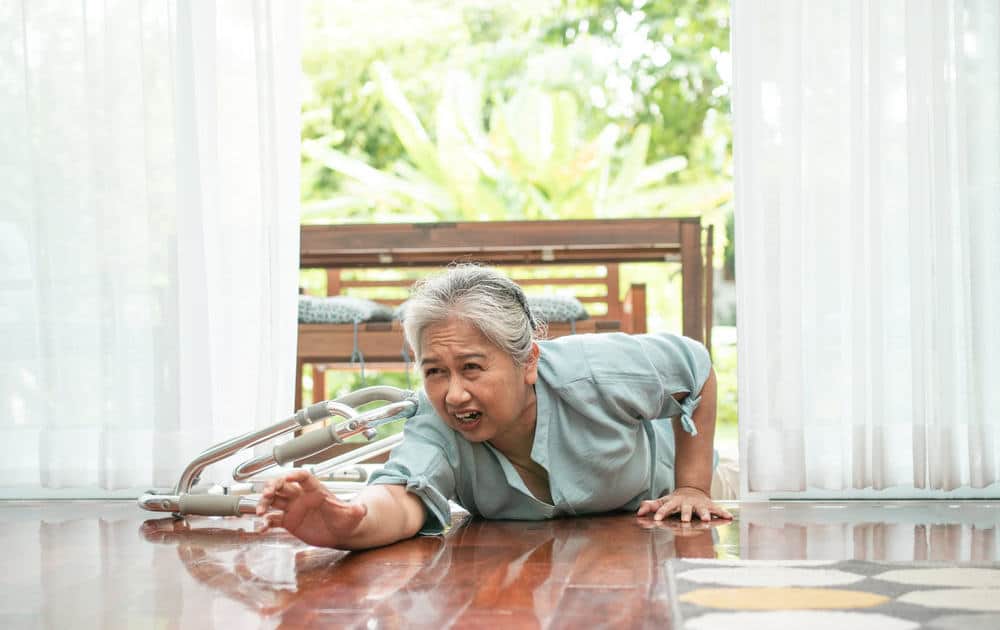
Physical therapy incorporates strength training exercises tailored to seniors. These exercises help rebuild muscle mass, enhance overall strength, and improve the ability to perform everyday tasks, such as lifting groceries or climbing stairs.
Physical therapy also includes balance and coordination exercises that target stability. These exercises are crucial in reducing the risk of falls. Improved balance can lead to greater confidence in moving around safely.
Your loved one’s physical therapist will design an exercise program for your senior mom or dad to keep them active and strong.
Faster Recovery from Injury or Illness
Aging can increase the risk of injury and falls for senior citizens, and as we grow older, our bodies may find it difficult to heal faster.
Physical therapy can help:
- Speed up recovery
- Reduce inflammation and pain
- Help the body heal faster, and
- Boost immunity
So your loved one is back on their feet in a short time. Additionally, the physical activity from therapy can improve their overall health by strengthening their joints and muscles.
Promotes heart health
Physical activity, guided by a physical therapist, can improve cardiovascular function. Regular exercise helps maintain healthy blood pressure levels, enhances circulation, and reduces the risk of heart attacks and disease.
Improves joint flexibility
Stretching exercises in physical therapy increase the flexibility of muscles and joints. Improved flexibility can reduce stiffness, enhance range of motion, and decrease the likelihood of injuries. Your beloved senior can enjoy greater ease when bending, reaching, and stretching.
Enhances mental well-being
Physical therapy not only benefits the body but also the mind. Engaging in regular physical activity releases endorphins, which are natural mood lifters. This can reduce symptoms of depression and anxiety, providing a mental health boost.
Additionally, achieving physical milestones can enhance self-esteem and provide a sense of accomplishment.
Reduces or controls the symptoms for some conditions
Physical therapy, aside from falls and injuries, can help with several conditions such as:
- Neurological diseases include Parkinson’s, Alzheimer’s, and multiple sclerosis. Physical therapy can help seniors control tremors and maintain their balance and stability.
- Osteoporosis (brittle bones): In the U.S., an estimated 10 million people aged 50 and above have osteoporosis. Physical therapy can reduce bone loss, and improve bone health
- Osteoarthritis: one in three people over age 65 are living with arthritis in the US. Arthritis, a leading source of disability in older adults can cause chronic pain in senior citizens, reducing their range of motion. With physical therapy, your loved one’s therapist can prescribe effective exercises to reduce pain and improve range of motion
- Cancer: Some pain cancer patients experience can be lessened with physical therapy. This empowers them to continue treatment and perform daily activities
- Vertigo can cause problems with balance and dizziness a licensed physical therapist can help patients regain balance and coordination
- Incontinence: Weak pelvic floor muscles arise due to aging, and may make some older adults leak urine or always feel the urge to go. This can be embarrassing for a senior, and cause them to withdraw from others and keep to themselves. If your loved one suffers from incontinence, a trained physical therapist can teach them exercises to contract and relax the pelvic muscles to reduce symptoms
Types of Physical Therapy Services for Seniors
There are 4 main specialties of physical therapy for older adults to help them regain strength, and mobility and improve their quality of life.
Geriatric physical therapy
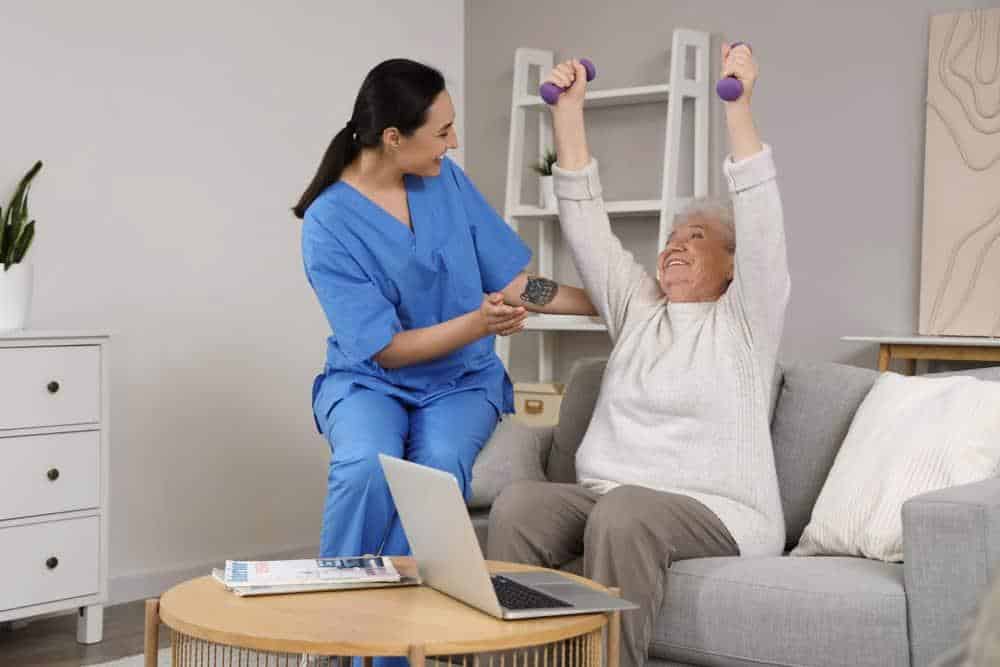
Geriatric physical therapy is designed to help older adults stay active and healthy. It involves special exercises and treatments that improve movement, strength, and balance. This therapy helps seniors manage pain, move better, and stay independent daily.
Physical therapists work closely with seniors to create personalized exercise plans, address specific health issues like arthritis or osteoporosis, and prevent falls.
Orthopedic physical therapy
Orthopedic physical therapy helps older adults with problems related to their muscles, bones, and joints. It involves special exercises and treatments to reduce pain, improve movement, and strengthen the body.
Your loved one will require this type of therapy after injuries or surgeries, like a broken bone or knee replacement, to help them recover faster and get back to their normal activities.
Cardiopulmonary physical therapy
If your loved one has heart and lung problems, cardiopulmonary physical therapy includes special exercises and treatments to improve breathing, strengthen the heart, and increase overall fitness.
This type of therapy is often used for people who have conditions like heart disease or chronic lung disease, helping them to breathe easier, feel stronger, and do everyday activities with less difficulty.
Neurological physical therapy
Neurological physical therapy helps people who have problems with their nervous system, like the brain and spinal cord. Seniors living with Alzheimer’s disease, Parkinson’s, and other neurological conditions can benefit from customized exercises and treatments that help improve movement, balance, coordination, and cognition.
A neurological physical therapist focuses these patients on how to regain their strength and ability to do everyday tasks. The goal is to help them move better and become more independent.
When does my loved one need physical therapy?
Your elderly loved one may require physical therapy in any of the following situations.
After a prolonged illness or hospital stay
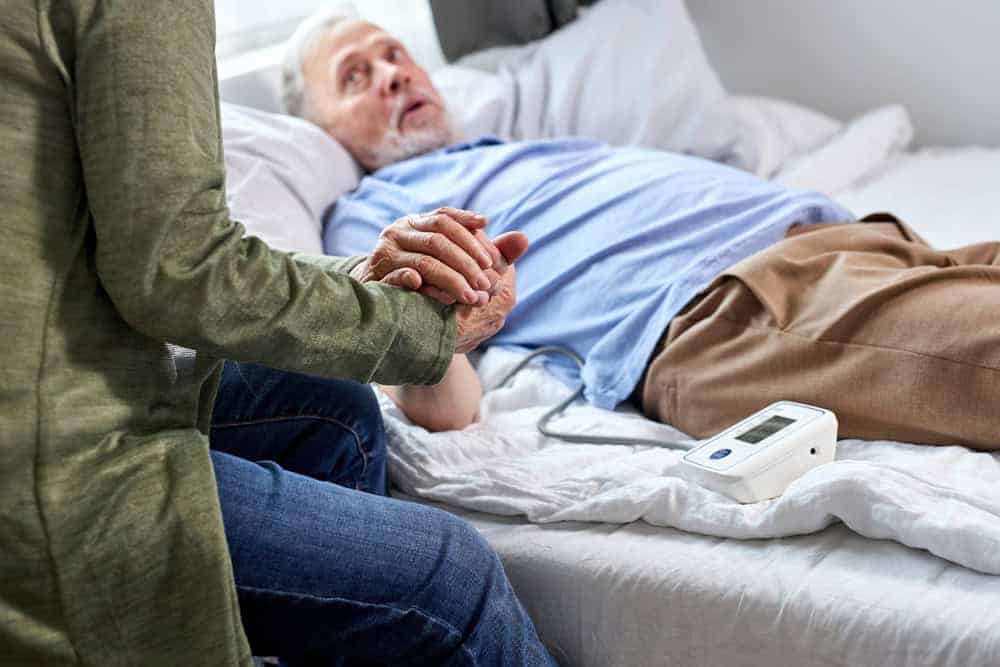
Research shows that bed rest can result in muscle atrophy and loss of muscle function. If your loved one was ill for a long period and had to spend days or weeks in bed, physical therapy is essential to help them regain muscle strength and any lost range of motion.
After a fall or an injury
Physical therapy is necessary after a fall or injury to speed up recovery, improve balance and coordination, and improve range of motion. Additionally, your loved one will learn how to prevent future falls and move more confidently.
After a diagnosis
Some diagnoses such as Multiple Sclerosis, Alzheimer’s, or cancer may cause a loss in physical functioning. This may be as a result of the condition itself, or the the side effects of treatments. Engaging in physical therapy from the onset helps to cushion symptoms, and enhance the quality of life of your beloved senior.
Anytime
You or your loved one don’t need to fall, be involved in an injury, or receive a diagnosis to begin a physical therapy program. Whether you’re hale and hearty, or are in any of the situations above, beginning physical therapy can improve your quality of life and promote independence in your twilight years.
What To Expect During Physical Therapy
The decision to seek physical therapy can be a recommendation from your loved one’s doctor, or by themselves. Depending on their condition, physical therapy may be used as a standalone treatment, or in addition to other treatments.
Here is what to expect during physical therapy for your loved one.
Initial Assessment
During the first visit, the physical therapist will conduct a thorough assessment to understand your loved one’s current physical condition, medical history, and specific needs. This may include evaluating their strength, mobility, balance, and range of motion. This is to enable the therapist to create a custom treatment plan.
Personalized Treatment Plan
Based on the assessment, the therapist will create a customized treatment plan tailored to your loved one’s goals and abilities. This plan will outline the types of exercises and therapies to be used, along with the frequency and duration of sessions.
It’s important to note that physical therapy should not be a one-size-fits-all approach.
Guided Exercises
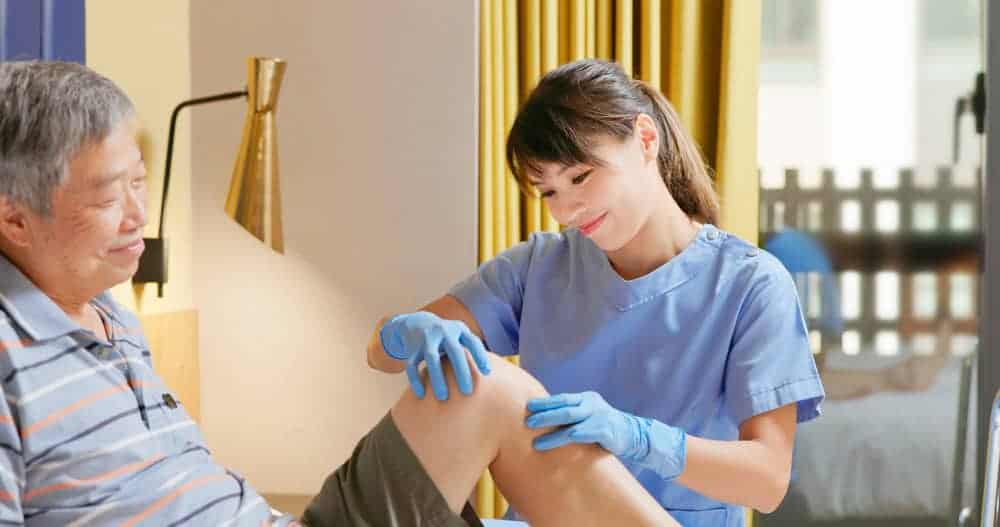
Your elderly loved one’s physical therapy sessions will include guided exercises designed to improve strength, flexibility, and balance. These exercises are usually gentle and adjusted to suit the senior’s fitness level, ensuring safety and effectiveness.
Pain Management Techniques
If your loved one experiences pain, the therapist will use various techniques to manage and reduce discomfort. This might include heat/cold therapy, massage, and specific exercises aimed at alleviating pain.
Balance and Coordination Training
To reduce the risk of falls, the therapist will incorporate exercises that focus on improving balance and coordination. These activities help your loved one feel more stable and confident in their movements.
Education and Home Exercises
The therapist will educate your loved one about their condition and the importance of physical activity. They will also provide exercises to be done at home to reinforce progress made during therapy sessions.
Progress Monitoring
The therapist will regularly assess your loved one’s progress and adjust the treatment plan as needed. This ensures that the therapy remains effective and continues to meet their evolving needs.
Support and Encouragement
Throughout the process, the physical therapist will offer continuous support and encouragement, helping your loved one stay motivated and positive about their rehabilitation journey.
How to Find the Right Physical Therapist for Seniors
To find the right physical therapist for your loved one, you’ll have to consider some factors such as qualifications, the needs of your loved one, and cost. Let’s explore some of them.
Factors to consider
Your loved one’s specific needs
There are different types of physical therapists, and which one to go for depends on the needs of your loved one. So the first step is assessing your loved one’s needs.
Say your loved one has a neurological condition like multiple sclerosis. In this case, a physical therapist specializing in neurology would be the best choice.
Additionally, if your loved one is home-bound, you want to find a therapist who can offer their services at home instead.
Licensing and experience
To practice physical therapy in the United States, you must be licensed to do so.
All physical therapists are required to finish a Doctor of Physical Therapy (DPT) program and complete the National Physical Therapy Examination (NPTE), which is overseen by the Federation of State Boards of Physical Therapy.
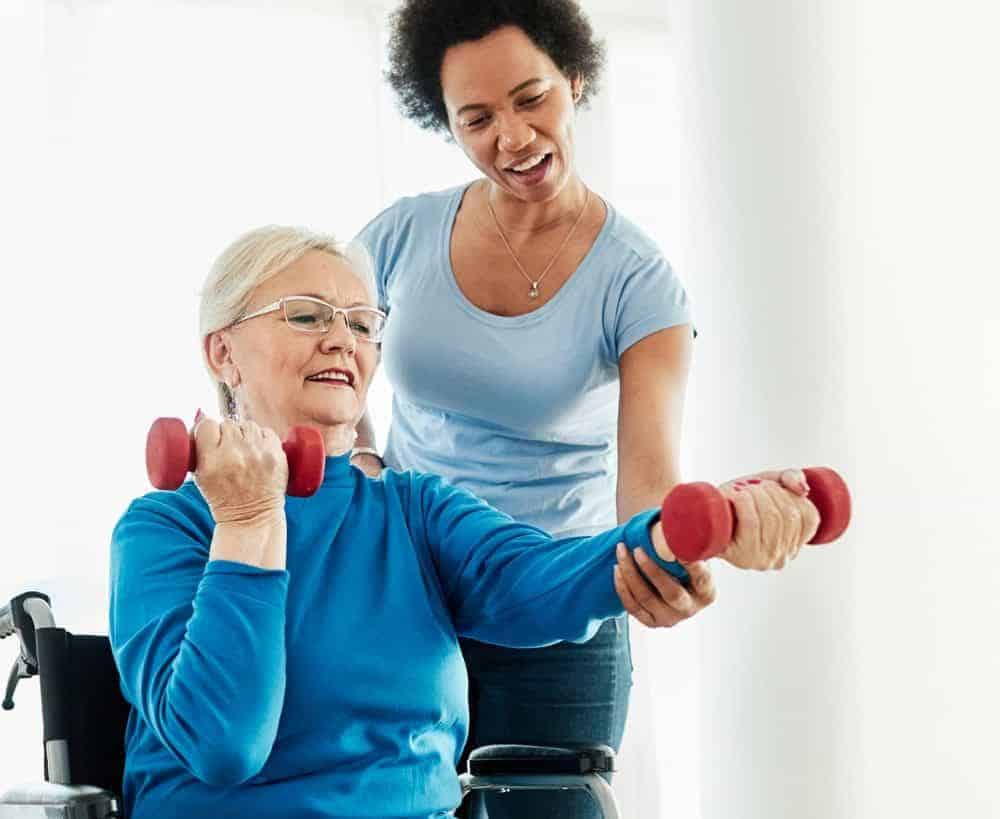
After passing the NPTE, they must obtain a state license to practice, with each state setting its requirements for continuing education to ensure compliance with current health standards, field advancements, and safety practices. Additionally, many physical therapists pursue board certification through the American Physical Therapy Association (APTA).
Location
If you won’t be receiving physical therapy sessions at home, it’s important to find a therapist who is close to you. Driving long distances may aggravate your injury or condition.
Keep in mind that this can be a hospital, clinic, or outpatient physical therapy center.
Insurance and budget
If you have public or private health insurance, check with your physical therapy provider to ensure they accept your insurance, and determine what it covers. This can help you reduce your out-of-pocket expenses.
If your loved one doesn’t have insurance, it’s best to have a realistic budget for the timeline of physical therapy.
Assess your compatibility
Your loved one’s physical therapist should be their success partner. They should be comfortable with them, and have a good relationship. Go with a therapist that makes them feel comfortable, and one they can trust.
Signs of a good physical therapist
What qualities make a good physical therapist? While you can catch some of these qualities during your first meeting, you may recognize the presence or absence of others after a couple of sessions.
However, don’t hesitate to change your therapist if you don’t feel good about them. Here are some qualities to look out for.
- Active Listening: A good therapist pays close attention to what you say, showing genuine interest in your concerns and symptoms. They ask clarifying questions and provide thoughtful responses, ensuring they fully understand your situation.

- Personalized Treatment Plans: They create customized treatment plans tailored to your loved one’s specific needs and goals. This individualized approach ensures that the therapy is effective and relevant to your loved one’s condition.
- Clear Communication: Effective communication is key. A good therapist explains your condition, treatment options, and exercises in a way that’s easy to understand. They give you honest information about the situation and keep you informed about your progress and any adjustments to your treatment plan.
- Professional Credentials: They have the necessary education, certifications, and licenses to practice. They stay updated with the latest advancements in their field through continuous education and professional development.
- Empathy and Compassion: A good therapist shows empathy and compassion, making your loved one feel comfortable and supported throughout their therapy journey. They understand the emotional and physical challenges your beloved senior may face and provide encouragement and reassurance.
- Goal-Oriented Approach: They set clear, achievable goals for your therapy and work diligently to help you reach them. They track your progress and celebrate your successes, keeping you motivated and focused.
- Positive Reviews and Recommendations: A good therapist often has positive reviews and recommendations from other patients. Word-of-mouth referrals and testimonials can provide insight into their effectiveness and patient satisfaction.
- Patience and Adaptability: They are patience, allowing you to progress at your own pace without rushing the process. They are adaptable and ready to modify treatment plans based on your feedback and changing needs.
- Collaboration with Other Healthcare Providers: A good therapist collaborates with other healthcare providers to ensure a comprehensive approach to your loved one’s care. They communicate with doctors, specialists, and other therapists to provide the best possible outcomes.
Questions to ask your therapist
Asking the right questions means you can gauge if a therapist would be the best fit for your loved one. Here are 5 crucial questions to ask a physical therapist before you move forward with them.

- What is your experience with my specific condition?
Understanding the therapist’s experience with your specific issue or condition is vital. Ask about their familiarity with treating patients who have similar symptoms or diagnoses to ensure they have the expertise to address your needs effectively.
- What will my treatment plan include?
Inquire about the details of your personalized treatment plan. Understanding the types of exercises, therapies, and techniques that will be used can help you set realistic expectations and prepare for your sessions.
- How will you measure my progress?
Knowing how your progress will be monitored and assessed is important. Ask about the specific methods and benchmarks the therapist will use to track your improvements and adjust the treatment plan as needed.
- What are the expected outcomes and timeframe?
Ask about the expected outcomes of your therapy and the estimated timeframe for achieving your goals. This will give you a clear idea of what to expect in terms of recovery and how long the process might take.
- Do you accept my insurance, and what are the costs involved?
Understanding the financial aspect of your therapy is crucial. Confirm whether the therapist accepts your insurance and ask about any out-of-pocket costs, copayments, and the overall expense of the treatment plan.
Where to find the right therapist
To find the right therapist for your loved one, you can ask for a referral, use online directories, or search online.
- Referrals
Start by asking for referrals from your primary care doctor, friends, family, or other healthcare professionals. Personal recommendations can provide insight into the therapist’s skills, approach, and effectiveness based on firsthand experiences.
- Online Directories
Utilize online directories like the American Physical Therapy Association (APTA) Choose PT website, which lists licensed and certified therapists. These directories often include detailed profiles, credentials, specializations, and patient reviews to help you make an informed choice.
- Online Search
Conduct an online search to find therapists in your area. Look for therapists with strong reviews and high ratings on platforms like Google, Yelp, and Healthgrades. These reviews can provide valuable information about patient satisfaction, the office environment, and the therapist’s approach to care.
- Local Hospitals and Clinics
Contact local hospitals and clinics to inquire about their physical therapy departments. Many hospitals have highly qualified therapists on staff and can provide recommendations based on your specific needs. They may also offer outpatient therapy services.
Takeaway

Physical therapy is beneficial for older adults to improve their mobility, boost their confidence, and enhance their quality of life.
Most older adults wait until they are ill, or had an injury before they begin physical therapy. However, your elderly loved one can begin a physical therapy program at any time to lead the best quality of life and retain independence as they grow older.
If you’re on the search for the best physical therapist for your beloved senior, Amy’s Eden liaises with trusted providers to offer exceptional, compassionate, and customized services. You can have your therapist come to your home, or you can go to them.
Additionally, if your loved one needs a helping hand while they work on their range of motion and physical function, we have compassionate caregivers ready to assist with daily activities, meal preparation, running errands, and companionship.
Contact us today to learn more about how we can help your loved one retain their independence as they journey into their twilight years.





